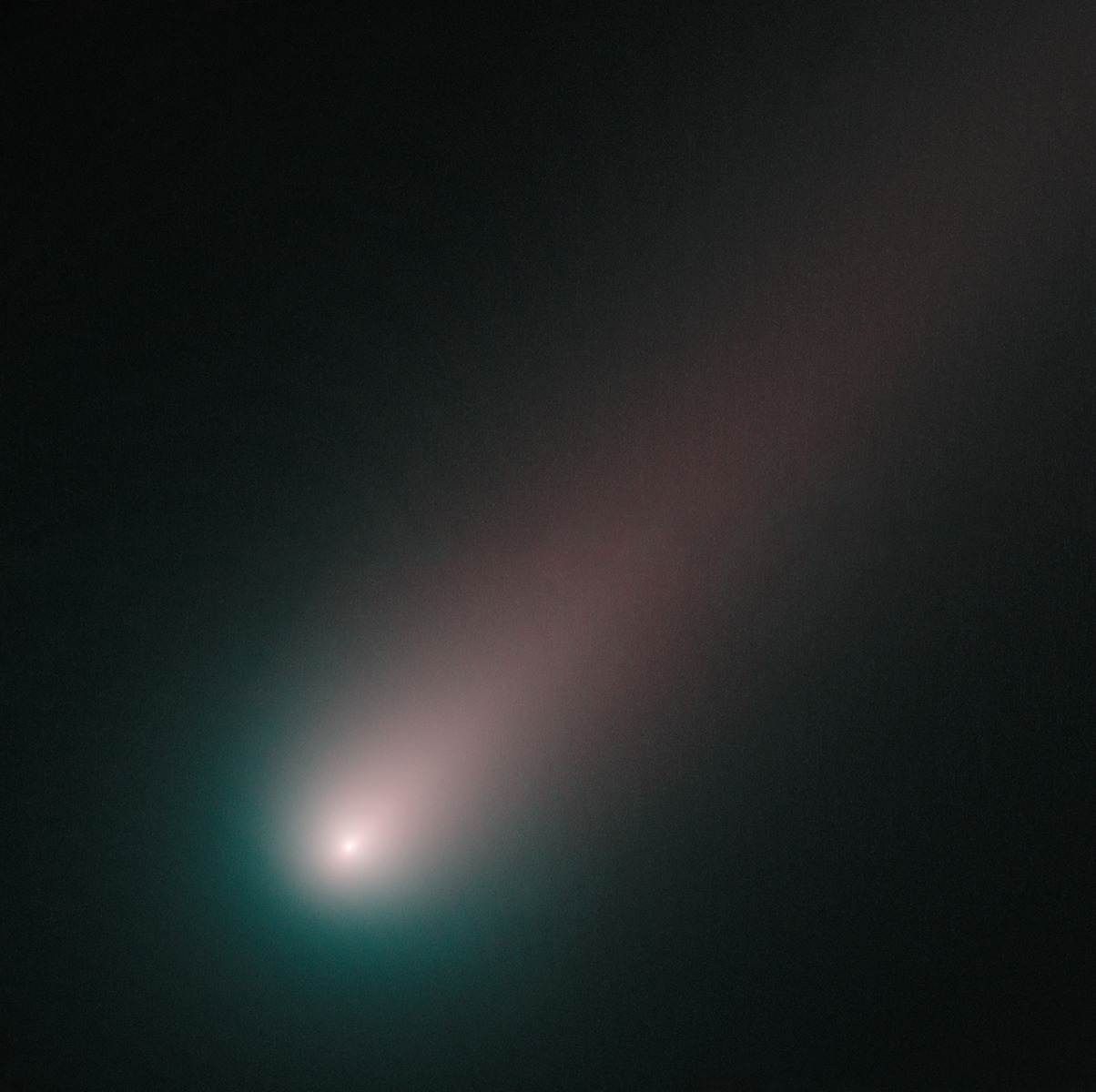Comets could have seeded life on Earth
Interview with
Life here on Earth depends on a range of complex chemicals, including sugars that are used in genetic material like DNA and its RNA relative. But it's always been a mystery how these molecules got here in the first place. Now a brand new study by scientists in France suggests that, if chemicals contained in ice particles are zapped with ultraviolet rays from nearby newly-formed stars, this can kickstart the creation of more complex life-essential molecules, like sugars. Helen Fraser is a space scientist and astrochemist at the Open University and she spoke to Chris Smith about the study...
are used in genetic material like DNA and its RNA relative. But it's always been a mystery how these molecules got here in the first place. Now a brand new study by scientists in France suggests that, if chemicals contained in ice particles are zapped with ultraviolet rays from nearby newly-formed stars, this can kickstart the creation of more complex life-essential molecules, like sugars. Helen Fraser is a space scientist and astrochemist at the Open University and she spoke to Chris Smith about the study...
Helen - Astrochemistry is the study of where molecules come from in space, how they're formed during the process of star and planet formation. What we see as a by-product of star formation is loads of molecules forming. Carbon monoxide, carbon dioxide, water, methanol, ethanol - they're very, very common in star forming regions. What's interesting about star forming regions is they're very cold, about minus 263 degrees centigrade - so, very cold. And so, what happens is these molecules are not in gas, but they're actually frozen out and they form what we call astronomical ices.
Chris - Would the theory then be that some of these things form in space, drift around as these ices, and then somehow land on a newborn planet like the early Earth for example where they could bring the raw ingredients to make complicated processes like the life process get going?
Helen - Sort of, yes. What basically is happening is when stars are actually forming, there's a huge cloud of gas and dust around it. in that cloud of gas and dust, these ices, these molecules undergo a lot of processing. They're affected by the starlight from the new star which is ultraviolet light. They also get affected by heat. one of the interesting things is all these dusts and ice, eventually is also the material that forms the baby planets, the comets, the asteroids, and eventually, the planets themselves. So, whatever kind of chemistry is knocked up in those small particles is also the chemistry which gives us the naked ingredients which can be delivered to the planets.
Chris - Where does this new paper shed light on that process?
Helen - Well, what these guys are actually trying to do is they're trying to recreate that process of how the chemistry is happening in a star forming region in the lab. they try and recreate the low pressure and low temperature conditions in a star forming region and then they grow a model of this interstellar ice, this solid material that's made of carbon, hydrogen, oxygen, and nitrogen. And then what they do is they shine a light on it. this light is essentially an ultraviolet light, simulating what the starlight is doing. When this hits the ices, it basically stimulates lots of different chemical reactions. and then you warm the ice up as if the star is warmed up and the ice appears to disappear. But what's left behind in the experiment is actually what we call technology in the fields, 'yellow gunk'. So, we know from work that was done about 12 or 14 years ago that inside that yellow gunk, there are some amino acids. What this paper is showing is that also, inside that yellow gunk, there are sugar type molecules and sugars. They're also of biological interest.
Chris - What are the sugars and why might they be important?
Helen - The sugars that are actually here are glycolaldehyde and glyceraldehydes. Both of these sugars are very important in terms of synthesis of RNA.
Chris - This is a form of genetic material, isn't it?
Helen - Yes, which comes before DNA. So, one of the key propositions in terms of evolution of pre-biotic life is that first of all, we have what we call an RNA world which is dominated by this material and then we move to a DNA type world that we expect to see now. So, if you like, sugars are even a step before that. they're required to make that next synthetic step in the biology.
Chris - When they analysed the material, can they be reasonably confident that what they think they're analyser is saying is in there is what's really in there? In other words, when you do the chemical tests on the yellow gunk and it says there are these sugars there, is it possible that you've actually changed the chemicals in the course of doing the experiment to test for them?
Helen - Well, this is a really good question and actually, it's part of the reason why there is some controversy around this and experiments like this. So, what they do is actually dissolve the yellow gunk in some liquid. It's a little bit like dissolving sugar in a cup of tea, but rather than using hot water, you often use an acidic material. It can sometimes lead to different kinds of chemistries. It's a little bit hard from this paper to know how much that's adjusted the chemistry. and so, I think time will tell on that one. That will be an interesting debate for the community to have, whether these very complicated sugars are really absolutely there or also products of the analysis step.










Comments
Add a comment